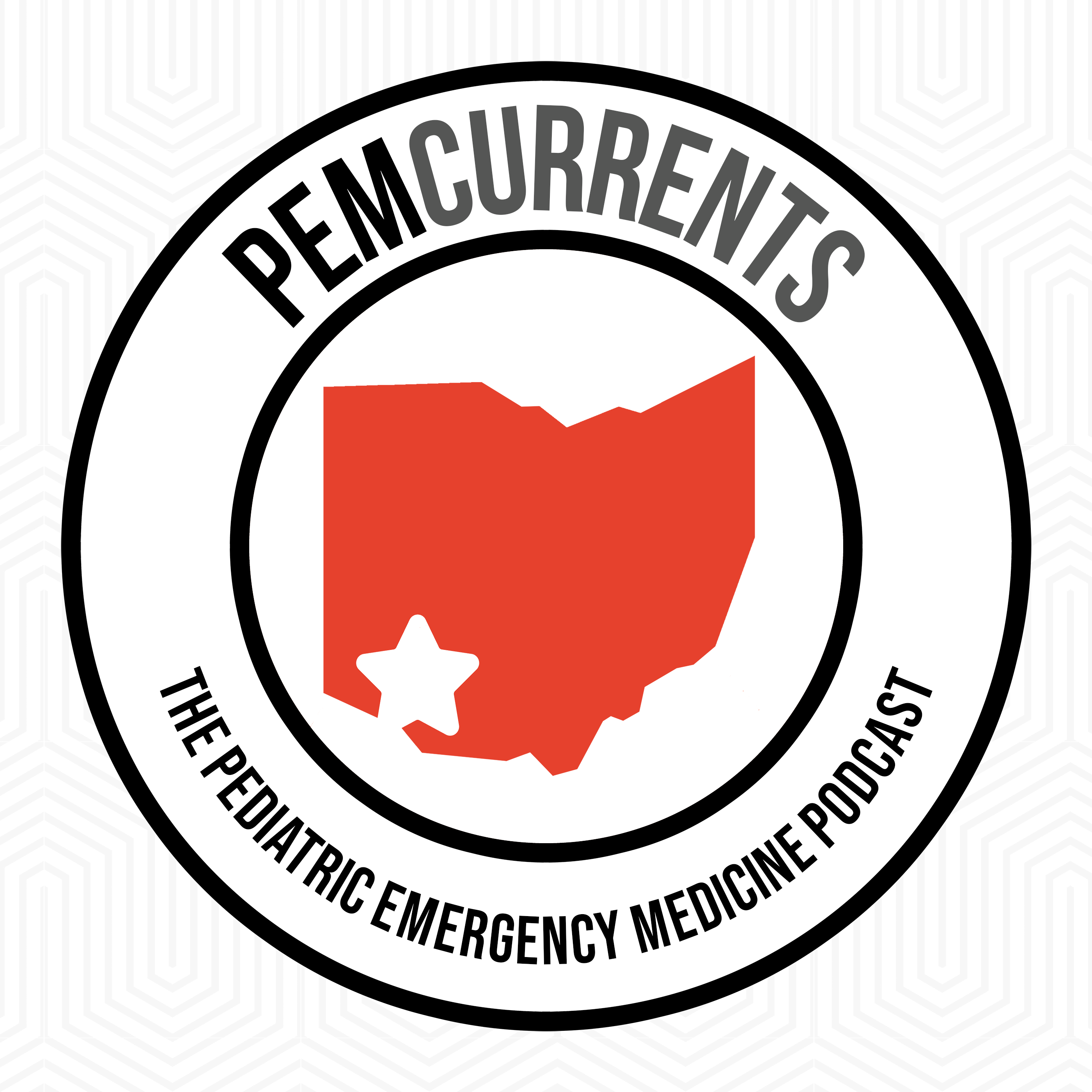There are protocols in place that assist highly trained Emergency Medical Service providers in assuring that agitated children are safely transported to their destination. This podcast episode hosted by Brad Sobolewski (@PEMTweets) and co-authored by Dennis Ren (@DennisRenMD) is all about what prehospital providers should do to get these agitated children safely to the ED. It is also episode 4 in a 5 episode series focused on agitation in children and adolescents.
After listening to this episode you will be able to:
- Identify unique aspects of the pre-hospital environment that impact assessment and treatment of agitated children
- Describe the role of EMS personnel and EMS director in the care of agitated children.
- Describe the role of medical control in determining destination and goals of safe transport
This episode is a co-production of the Emergency Medical Services for Children Innovation and Improvement Center whose mission is to minimize morbidity and mortality of acutely ill and injured children across the emergency continuum.
Other Episodes in the Agitation Series
Episode 1: Differentiating organic versus psychiatric causes of agitation and altered mental status | Supplementary EMDocs article
Episode 2: Non-pharmacologic management of agitated children | Supplementary EMDocs article
Episode 3: Pharmacologic management of the agitated child | Supplementary EMDocs article
Episode 5: Management of the child with mental health problems who is boarded in the Emergency Department (Coming June 14, 2023)
Listen

Managing Pain in Sickle Cell Vaso-Occlusive Crises – PEM Currents: The Pediatric Emergency Medicine Podcast
Subscribe
EMDocs Collaboration
EMDocs.net – the excellent Emergency Medicine site will also be contributing a supplementary article for each episode that will be posted each Friday following the release of the podcast episode. These articles will take another look at the content included in this episode.
Special thanks to Manpreet Singh, MD (@MprizzleER) for helping to put this collaboration together.
EMSC IIC
To learn more about the Emergency Medical Services for Children Innovation and Improvement Center visit https://emscimprovement.center
Email km@emscimprovement.center
Follow on Twitter @EMSCImprovement
EMSC IIC: Pediatric Education and Advocacy Kit (PEAK): Agitation
PEAK Agitation resources
- EIIC/TREKK: Care of the Agitated Patient Algorithm
- EIIC/TREKK: Agitation Medication Dosing Recommendation Table
- EIIC: De-escalation Tips for Pediatric Agitation Infographic
- EIIC: Emergency Department Management of the Agitated Pediatric Patient Interactive Learning Module
- EIIC: Agitation in Neurodivergent Patients with Drs. Alice Kuo and Ilene Claudius Podcast
- EIIC: Safe Control of the Agitated Patient Webinar Series with Dr. Marianne Gausche-Hill
- New England EMSC: New England Regional Behavioral Health Toolkit
Disclaimer
The Emergency Medical Services for Children Innovation and Improvement Center is supported by the Health Resources and Services Administration (HRSA) of the U.S. Department of Health and Human Services (HHS) as part of an award (U07MC37471) totaling $3M with 0 percent financed with nongovernmental sources. The contents are those of the author(s) and do not necessarily represent the official views of, nor an endorsement, by HRSA, HHS, or the U.S. Government. For more information, please visit HRSA.gov
To learn more about the Emergency Medical Services for Children Innovation and Improvement Center visit https://emscimprovement.center
Email km@emscimprovement.center
Follow on Twitter @EMSCImprovement
References
Kupas D et al. NASEMSO: Clinical care and restraint of agitated or combative patients by emergency medical service practitioners. https://nasemso.org/wp-content/uploads/Clinical-Care-and-Restraint-of-Agitated-or-Combative-Patients-by-Emergency-Medical-Services-Practitioners.pdf
Patient restraint in emergency medical services [Position Statement]. Prehosp Emerg Care. 2017;21(3):395-396.
















[…] podcast posted on PEM Currents – Hosted by Brad Sobolewski (@PEMTweets) and co-authored by Dennis Ren […]